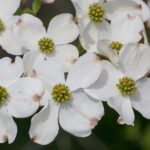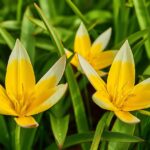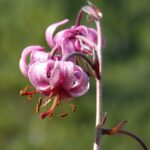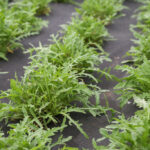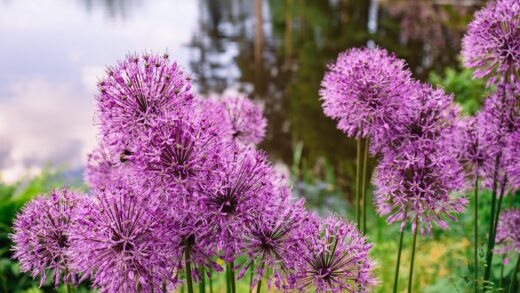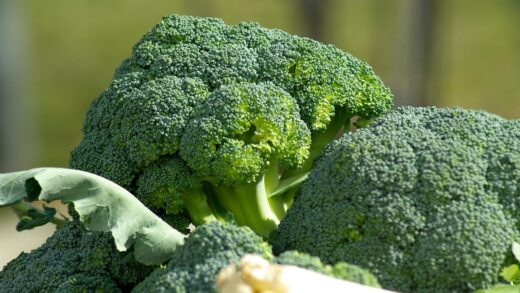The care of Persian onion
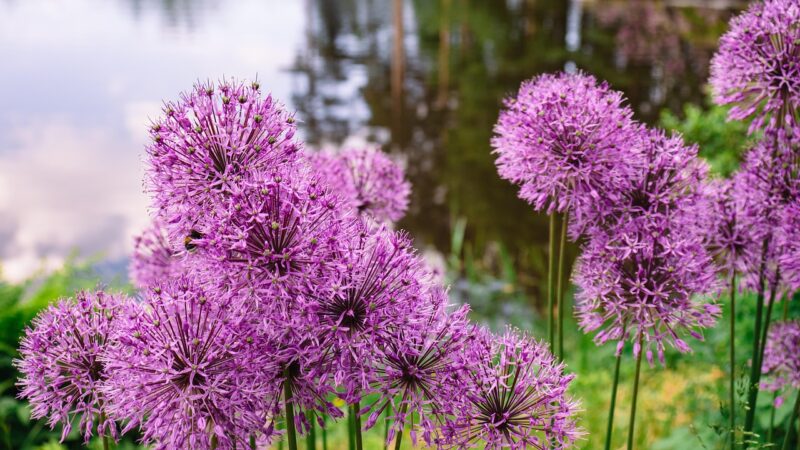
The Persian onion, known botanically as Allium aflatunense, stands as a majestic and structurally fascinating addition to any ornamental garden. Its tall, sturdy stems culminate in large, spherical flower heads composed of dozens of star-shaped, purple florets, creating a dramatic visual impact in late spring and early summer. Proper care is essential to ensure these architectural plants thrive and return year after year with increasing vigor. Understanding its lifecycle, from the emergence of its broad, strap-like leaves in early spring to its dormant period in the heat of summer, is the foundation of successful cultivation. This comprehensive guide delves into the essential aspects of caring for this remarkable allium, ensuring a spectacular display that bridges the gap between spring bulbs and summer perennials.
Introduction to Allium aflatunense care
Allium aflatunense is a relatively low-maintenance bulbous perennial, making it an excellent choice for both novice and experienced gardeners. Its fundamental needs are straightforward: well-drained soil, ample sunlight, and appropriate moisture during its active growth phase. The key to its long-term success lies in providing these conditions consistently and understanding its natural growth cycle. The plant directs all its energy into producing its impressive flower stalk and then begins to enter dormancy as its foliage yellows and withers, a natural process that should not be interfered with. Adhering to these basic principles will reward you with a reliable and stunning floral performance each season.
The care regimen for the Persian onion changes throughout the year, aligning with its distinct growth phases. In the spring, as the foliage emerges, the focus is on providing adequate water and nutrients to support the development of the robust leaves and the towering flower stem. After the vibrant bloom has faded, the focus shifts to post-flowering care, which is crucial for replenishing the bulb’s energy reserves for the following year’s display. Finally, as the plant enters summer dormancy, care requirements diminish significantly, primarily involving maintaining a relatively dry environment to prevent bulb rot.
One of the most appealing aspects of growing Allium aflatunense is its inherent resistance to many common garden pests. As a member of the onion family, its tissues contain sulfurous compounds that are a natural deterrent to herbivores like deer, rabbits, and squirrels, which tend to avoid them entirely. This makes them a reliable choice for gardens where these animals are frequent visitors. While they are generally robust, they are not entirely immune to problems, so vigilance regarding soil conditions and potential diseases is still necessary for optimal health.
Long-term success with Persian onions involves more than just annual care; it also includes periodic tasks such as division. Over several years, the parent bulb will produce offsets, leading to a denser clump of plants. While this can create a fuller display, overcrowding can eventually lead to reduced flower size and vigor. Dividing these clumps every three to five years not only rejuvenates the planting but also provides an excellent opportunity to propagate these beautiful plants and expand their presence in the garden.
More articles on this topic
Soil preparation and requirements
The single most critical factor in the successful cultivation of Allium aflatunense is excellent soil drainage. These bulbs are highly susceptible to rot if they are left in waterlogged or heavy, compacted soil, particularly during their summer and winter dormancy periods. Therefore, preparing the planting site thoroughly is a worthwhile investment of time and effort. The ideal soil is a sandy loam or a chalky soil that allows water to percolate through it freely, preventing moisture from pooling around the bulb’s base. If your garden has heavy clay soil, significant amendment is necessary to ensure the plant’s survival and health.
To improve heavy clay soils, incorporate generous amounts of organic matter such as well-rotted compost, leaf mold, or composted bark. These materials help to break up the dense clay particles, creating a more open and friable soil structure. Additionally, adding horticultural grit or coarse sand will further enhance drainage by creating larger pore spaces within the soil profile. When planting on heavy soil, it is also beneficial to create a small mound or a raised bed to elevate the bulbs slightly above the surrounding grade, further ensuring that water drains away from the root zone.
The preferred soil pH for Allium aflatunense is neutral to slightly alkaline, typically within a range of 6.6 to 7.8. Most average garden soils fall within this range, so pH modification is not usually necessary unless you have particularly acidic soil. If a soil test indicates high acidity, you can amend the soil with garden lime or wood ash to raise the pH level. Conducting a soil test before planting can provide valuable insights into both the pH and the nutrient composition of your soil, allowing for targeted amendments.
Before planting, the soil should be loosened to a depth of at least 30 centimeters to allow the roots to establish themselves easily. This deep cultivation helps to alleviate any compaction and ensures a healthy root system can develop, which is vital for anchoring the tall flower stalks and for efficient nutrient and water uptake. Removing any weeds or large stones from the planting area at this stage will reduce competition for resources and create an ideal environment for the bulbs to thrive from the moment they are planted.
More articles on this topic
Sunlight and location essentials
Allium aflatunense is a sun-loving plant that requires a position in full sun to perform at its best. This means selecting a location in the garden that receives at least six to eight hours of direct, unfiltered sunlight per day during its active growing season in the spring. Ample sunlight is crucial for strong stem development, preventing the tall flower stalks from becoming weak and leggy, which can lead to them bending or breaking. Furthermore, sufficient sun exposure directly contributes to the size and vibrant coloration of the flower heads, as well as promoting robust photosynthesis for energy storage in the bulb.
The placement of these alliums within a garden design should be carefully considered to maximize their visual appeal and accommodate their unique growth habit. Because their foliage begins to yellow and die back, often before the flowers have fully faded, it is wise to plant them amongst other perennials that will fill in the space as the allium foliage recedes. Companion plants like hostas, geraniums, or ornamental grasses can effectively mask the declining leaves while complementing the spherical blooms. This strategic placement ensures the garden remains visually appealing throughout the season.
When choosing a location, consider the plant’s mature height, as Allium aflatunense can reach up to 90-120 centimeters tall. Planting them towards the middle or back of a border ensures they do not overshadow smaller plants in the spring, and their tall, architectural form can create a stunning vertical accent. They are also highly effective when planted in large drifts or bold clumps, creating a powerful statement with their synchronized blooming. Avoid planting them in areas exposed to extremely strong winds, as even their sturdy stems can be vulnerable to damage without some protection.
While full sun is ideal, Allium aflatunense can tolerate a small amount of partial shade, particularly in very hot climates where the afternoon sun can be intense. However, in shadier conditions, you may notice a reduction in flowering performance and a tendency for the stems to lean towards the available light source. The plant’s overall vigor and ability to perennialize successfully are significantly enhanced by maximizing its exposure to direct sunlight. Ultimately, the more sun the plant receives during its growth phase, the more energy it can store for future seasons.
Watering and moisture management
Proper watering is a crucial aspect of caring for Allium aflatunense, but its needs vary dramatically throughout its lifecycle. The most critical period for consistent moisture is during the spring when the plant is actively growing its leaves and developing its flower stalk. During this phase, the soil should be kept evenly moist but never waterlogged. It is important to water deeply and infrequently, allowing the top few centimeters of soil to dry out between waterings, which encourages the roots to grow deeper in search of moisture. Insufficient water during this active growth period can result in stunted growth and smaller, less impressive flowers.
Once the flowers begin to fade and the foliage starts to yellow, the plant is signaling its transition into dormancy. At this point, you should significantly reduce and eventually cease supplemental watering altogether. The bulb requires a warm, dry period during its summer dormancy to mature properly and to prevent the onset of fungal diseases and rot. Continuing to water a dormant allium is one of the most common mistakes in its cultivation and can be fatal to the bulb. In regions with wet summers, the importance of excellent soil drainage becomes even more pronounced to ensure the bulbs do not sit in damp soil.
The method of watering can also influence the plant’s health. It is best to apply water directly to the soil at the base of the plant, avoiding wetting the foliage if possible. Overhead watering can sometimes encourage the development of fungal diseases like downy mildew, especially in humid conditions or when airflow is poor. Using a soaker hose or drip irrigation system is an efficient and effective way to deliver water directly to the root zone without wetting the leaves. Early morning watering is generally preferable as it allows any moisture on the leaves to dry quickly as the day warms up.
Monitoring the soil moisture is more reliable than adhering to a strict watering schedule, as needs can change based on weather conditions such as rainfall, temperature, and wind. The easiest way to check is to insert a finger into the soil to a depth of about 5-7 centimeters. If the soil feels dry at that depth, it is time to water. Remember that established plants with deep root systems are more drought-tolerant than newly planted bulbs, which may require more consistent attention to watering during their first growing season.
Fertilizing for optimal growth
While Allium aflatunense is not an exceptionally heavy feeder, providing the right nutrients at the right time can significantly enhance its performance, leading to larger blooms and stronger bulbs. The ideal time to apply fertilizer is in the early spring, just as the new shoots are emerging from the soil. A balanced, slow-release granular fertilizer with a relatively low nitrogen content is an excellent choice. An NPK ratio such as 5-10-10 is suitable, as the higher proportions of phosphorus (P) and potassium (K) support strong root development and robust flower production, rather than excessive leafy growth.
Organic amendments are also highly beneficial for the long-term health of the soil and the bulbs. Incorporating well-rotted compost or manure into the soil at the time of planting provides a slow release of essential nutrients and improves soil structure and water retention. An annual top-dressing of compost around the base of the plants in early spring can also serve as a gentle feed throughout the growing season. Bone meal is another traditional and effective organic fertilizer for bulbs, as it is an excellent natural source of phosphorus, which is vital for bulb health.
It is crucial to avoid applying high-nitrogen fertilizers, as these can stimulate lush, soft foliage at the expense of the flowers and bulb development. Excessive nitrogen can also make the plant more susceptible to fungal diseases and can weaken the flower stems. The goal is to support the natural growth habit of the plant, which prioritizes the flower and the subsequent energy storage in the bulb. Fertilization should be focused on replenishing the nutrients used during the intense period of spring growth.
After the plant has finished flowering, there is no need for further fertilization. As the foliage begins to die back, the plant is in the process of transferring energy from the leaves back down into the bulb to fuel the next year’s growth. Adding fertilizer during this time or during the summer dormancy period is ineffective and can even be detrimental, as it may encourage unseasonal growth or contribute to bulb rot if the soil is moist. The focus after flowering should be on allowing this natural process of senescence to complete undisturbed.
Post-bloom care and dormancy
The period immediately following the magnificent floral display of Allium aflatunense is a critical phase in the plant’s annual cycle. After the last of the small, star-shaped florets have faded, your primary task is to allow the foliage to die back naturally. It can be tempting to tidy up the plant by cutting down the yellowing leaves, but this is a significant mistake. The leaves continue to photosynthesize for several weeks after flowering, and this process is essential for creating and storing the energy the bulb needs to survive its dormancy and produce a flower the following year. Removing the foliage prematurely will severely weaken the bulb and will likely result in a poor or non-existent floral display in the next season.
You have a choice regarding the spent flower heads. You can deadhead the plant by cutting the stalk at its base once the color has faded, which prevents the plant from expending energy on seed production and directs all available resources back into the bulb. This is the recommended approach if your goal is to maximize the size and vigor of the bulbs for future years. However, the dried seed heads of Allium aflatunense are highly ornamental and can provide architectural interest in the garden for many weeks or even months. Many gardeners choose to leave them in place for their aesthetic value, and they can also be cut and used in dried floral arrangements.
Once the foliage has completely withered and turned brown and dry, it can be safely removed by gently pulling it away from the base or cutting it at soil level. By this time, typically in mid to late summer, the plant has entered its full dormancy period. During this phase, the bulb requires a period of warmth and relative dryness. It is at its most vulnerable to rot during this time, so ensuring the soil is not overly irrigated is paramount. This dormancy period is a natural part of its lifecycle, adapted to the hot, dry summers of its native habitat.
The plant will remain dormant throughout the late summer and autumn, with no visible signs of life above ground. Below the surface, however, the bulb is resting and preparing for the next growth cycle. As autumn progresses and soil temperatures cool, it will begin to develop new roots in preparation for the spring emergence. No special care is needed during the autumn and winter in most climates, as the bulb is hardy and well-equipped to handle cold temperatures, provided the soil remains well-drained.
Long-term health and maintenance
Ensuring the long-term vitality of Allium aflatunense involves a few periodic maintenance tasks beyond the annual care cycle. The most important of these is division. Over several years, a single bulb will multiply by producing offsets, forming a dense clump. While this can look impressive initially, overcrowding eventually leads to competition for resources like water, nutrients, and light. This can result in smaller plants, weaker stems, and a noticeable decline in the size and number of flowers.
The best time to divide clumps of Persian onions is in the late summer or early autumn, after the foliage has completely died back and the bulbs are fully dormant. Carefully lift the entire clump from the ground using a garden fork, being cautious not to damage the bulbs. Once lifted, you can gently separate the individual bulbs and offsets by hand. Discard any bulbs that show signs of damage or disease, and select the largest, healthiest ones for replanting.
When replanting the divided bulbs, follow the same guidelines as for initial planting. Choose a sunny location with well-drained soil, and plant the bulbs at a depth of approximately three to four times their own height. Spacing them about 15-20 centimeters apart will give them adequate room to grow and multiply for the next few years before division is needed again. This process not only invigorates your existing stock but also provides a sustainable way to increase the number of plants in your garden or to share with fellow gardeners.
Beyond division, long-term health is maintained by practicing good garden hygiene and being observant. Regularly remove weeds from around the base of the plants to reduce competition. Monitor the soil conditions from year to year, and top-dress with compost each spring to maintain soil fertility and structure. By paying attention to the plant’s performance and intervening with division when you notice a decline in vigor, you can ensure that your Allium aflatunense remains a spectacular and reliable feature of your garden for many years to come.









